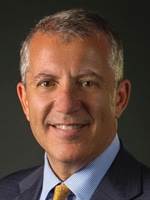Innovation labs: different means to the same end
October 2018—What’s the best way for a hospital to kill a health care improvement-related idea? Some say (tongue in cheek) send it to committees, meetings, suggestion boxes, or the like. A better (and more serious) question for health care providers might be: Where can health care ideas thrive and move from vision to reality?
For a growing number of health care systems, the answer is the innovation lab. Hospitals big and small from coast to coast are benefiting from developing such centers. According to the MedStar Institute for Innovation website (www.bit.ly/MedStar_Innovation), “In fact, we’ve reached the point in health care that if a health care system does not count an ‘Innovation Institute’ or ‘Center for Innovation’ somewhere in its organizational landscape, it risks appearing to be behind the curve and to lack sufficient long-term focus.” Among the more recent entities to expand their innovation efforts are Boston’s Beth Israel Deaconess Medical Center, which launched its Health Technology Exploration Center in May, and UCHealth, which is preparing to move its innovation program into the Catalyst Health-Tech Innovation building in Denver early next year.
CAP TODAY spoke with executives from four hospital-based innovation centers. Their business models vary, but all are focused on collaborating with business partners to bring new technologies to patient care. Here’s what they had to say.
•••
The UCHealth CARE Innovation Center, in Aurora, Colo., is moving to the Catalyst HTI building because “we know that as we focus on digital health, data science, prescriptive intelligence, we really have to partner with industry, large and small,” says Richard Zane, MD, chief innovation officer at UCHealth and professor and chair of emergency medicine at the University of Colorado School of Medicine. “We have this large medical center campus, which is where our learning laboratory is, where our subject matter experts are. But where the ideation, the partnership, and the collaboration will happen, among other places, will be at the Catalyst HTI building.”

Dr. Zane
The Catalyst HTI building, which takes up an entire city block, houses approximately 70 organizations representing private enterprise, government, and health care providers and payers that operate as a “health care innovation ecosystem” that collaborates and incubates innovative ideas, Dr. Zane explains. A key project for UCHealth, following its move early next year, will be to develop a prototype for the “hospital room of the future,” he adds. This care setting would use “remote monitoring, prescriptive intelligence, and device integration to allow us to deliver care in the patient’s home just as we do in a tertiary care clinical center.”
In addition to funding innovation efforts through its operating budget, UCHealth has set aside venture capital funding to target potential business partners. “We work with and invest in companies of which we’d want to be a customer,” Dr. Zane says. “The goal is to build solutions to problems we encounter here.”
•••
Within Cleveland Clinic Innovations, the commercialization arm of the Cleveland Clinic, an innovation center funded by the National Heart, Lung, and Blood Institute targets medical technologies for heart, lung, blood, and sleep disorders, says Mark Low, managing director of the NIH Center for Accelerated Innovations, or NCAI, at Cleveland Clinic. With $14 million in funding through mid-2020, the NCAI supports the development of a range of technologies, “from devices, to diagnostics, to therapeutics, to e-health information technology products,” says Low, who also manages the Cleveland Clinic’s Global Cardiovascular Innovation Center.

Low
What sets NCAI apart, he says, is that “it’s very much a commercialization-oriented program as opposed to having an early stage licensing orientation.” Low and his staff work with academic researchers at Cleveland Clinic and six Midwestern health care institutions (Case Western Reserve University, Ohio State University, University of Cincinnati, Cincinnati Children’s Hospital Medical Center, University of Michigan, and Northwestern University) to provide not only funding but also coaching and guidance on getting their products to market. “We help them see that this is a product development pathway that’s linear and that they need to be able to develop a plan to take a project towards market, not just have a grant-to-grant mentality,” he explains.
Since its inception in 2014, NCAI has funded 54 projects. “Of those, 28 have been completed, and of those 28, seven have been licensed to new companies and have received some investment to take the technologies forward,” Low says. He points to two notable projects relating to blood platelets: Researchers at Case Western Reserve University have received Department of Defense funding to continue their development of a synthetic replacement for human donor platelet transfusion, and a team at Cincinnati Children’s Hospital Medical Center is receiving support from local investors to develop novel chemical inhibitors that extend the period of cold storage for platelets.
•••
Thomas J. Fogarty, MD, inventor of the Fogarty balloon catheter and a holder of more than 100 surgical patents, has firsthand experience with the difficulties innovators face in bringing new therapies to patients. This led the renowned cardiovascular surgeon to found the Fogarty Institute for Innovation in 2007.

Regan
The institute, which leases space on the Mountain View, Calif., campus of El Camino Hospital, a community hospital serving Silicon Valley, hosts 10 medical device companies at a time for two to four years. “It usually takes that long to develop enough of a value proposition to get series A funding,” says Mike Regan, chief innovation officer. “The companies in residence are responsible for their own fundraising and make all the decisions about their business,” he explains. “We help them in what we call full-contact mentoring: We have five mentors at the institute who average 25 to 30 years’ experience each in the medical device industry. We also offer a comprehensive educational curriculum and lab space to help them develop prototypes internally.”
The relationships between innovators and hospital physicians are mostly informal, Regan says. “Frequently, people from the CIRs [companies in residence] will shadow physicians to see how they interact with patients and find out what their needs are. They gain insights, bounce ideas off the physicians, and, on occasion, will do clinical work here.”
Dan Woods, chief executive officer for El Camino Hospital, says a clinical research team at the hospital often reviews a company’s activities at its monthly meetings. “We look at a new technology’s usefulness from a clinical care perspective. We’re one of the first sites that Fogarty companies come to for an early assessment.”
In 2007, HeartFlow became Fogarty’s first CIR. The company developed software that uses data from a CT scan to create a 3D model of coronary arteries, enabling physicians to noninvasively measure blood flow in cardiac arteries and analyze the impact of blockages on blood flow. El Camino Hospital then became one of the first hospitals in the San Francisco Bay area to use the technology once it became commercially available. HeartFlow recently achieved a valuation of $1.5 billion.
•••
When its first home was bulldozed to make way for a new building, the innovation lab at Intermountain Healthcare became a virtual organization, with its 15 staff members strategically scattered throughout the 22-hospital health system’s main campus in Murray, Utah. Now the innovation lab is part of the new complex, the Intermountain Gardner Transformation Center, but its mission hasn’t changed, says Marc Probst, Intermountain’s chief information officer. “We want to bring innovative ideas to Intermountain Healthcare and help startup organizations determine the feasibility of their products and take them to market.” One of the strongest aspects of the innovation lab, Probst says, is “our ability to bring interested clinicians together to look at a product, help us decide if it’s a good idea, and ultimately work with us to perfect it and put it into pilot.”

Probst
In a collaboration between clinicians and information services, Intermountain created a software application to customize surgical kits for patients and procedures to avoid waste, which saved the health care system tens of millions of dollars in one year. “We looked at that software and thought, ‘Wow, we could probably turn that into a business,’ and that’s what we’ve done,” says Probst in reference to the founding of Empiric Health.
The technology that launched Velano Vascular, another successful startup, didn’t originate at Intermountain but was piloted through the innovation lab. Velano developed a needle-free device that can draw blood through an inpatient’s existing IV catheter. “We brought nurses and patients into the discussion, and we got to the point where we felt it was safe enough to try in one of our facilities. Now it’s everywhere across Intermountain Healthcare,” Probst says.
•••
The executives who spoke with CAP TODAY agree that innovation labs are on a growth trajectory that’s likely to continue, due, in part, to the challenges facing U.S. health care. “Paralyzing costs. Shocking inefficiency. Mediocre outcomes. Our health care system must be disrupted,” Dr. Zane insists. “And we, as providers, would like to drive that disruption and drive innovation. But the only way that could work is by partnering with industry.” Adds Regan: “The health care system has become extremely competitive, so for some hospitals, it’s a way to differentiate themselves.” —Jan Bowers
Beckman Coulter introduces latest version of middleware
Beckman Coulter has released version 1.10 of its Remisol Advance middleware system for mid- to high-volume laboratories.
Enhancements to the latest iteration of the software include a centralized dashboard that combines sample status information—pending, stat, validated, and processed—turnaround time data, and quality control alerts in an intuitive format.
“By providing a snapshot display of important analytics in a single location, we are enabling technologists to identify and prioritize critical activities moment by moment,” Erik Johnson, vice president and general manager of workflow and informatics at Beckman Coulter, said in a press release.
Remisol Advance version 1.10 provides enhanced rules writing functionality that allows users to copy rules to multiple tests simultaneously and evaluate rule performance under simulated conditions. It also provides dynamic turnaround-time monitoring that alerts users to samples at risk of delay and displays a custom list of delayed samples.
Beckman Coulter, 800-526-3821
FDA document supports LOINC for IVD tests
The Food and Drug Administration has published “Logical Observation Identifiers Names and Codes for In Vitro Diagnostic Tests: Guidance for Industry and Food and Drug Administration Staff.” The document encourages adoption of the IVD Industry Connectivity Consortium’s LIVD (LOINC to In Vitro Diagnostics) format for the distribution of LOINC codes for IVD tests.
The guidance addresses such questions as, Is LOINC coding mandated by the FDA for IVD tests? Should manufacturers include LOINC codes in device labeling? What are the FDA’s views on manufacturers providing LOINC codes for uncleared or unapproved indications for use? And does the FDA recommend a specific format for distributing LOINC codes? It is available at www.bit.ly/LIVD_FDA_document.
“LIVD assures that laboratory personnel select the appropriate LOINC codes for IVD tests used by their laboratory,” said Serge Jonnaert, president of the IVD Industry Connectivity Consortium, in a press release. “It also allows LIS systems to automatically map the correct IVD vendor test result to a LOINC code.”
The FDA document states that “guidances describe the agency’s current thinking on a topic and should be viewed only as recommendations, unless specific regulatory or statutory requirements are cited.”
The IVD Industry Connectivity Consortium is a global, nonprofit organization focused on semantic interoperability within and across laboratories.
Dr. Aller teaches informatics in the Department of Pathology, University of Southern California, Los Angeles. He can be reached at raller@usc.edu. Hal Weiner is president of Weiner Consulting Services LLC, Eugene, Ore. He can be reached at hal@weinerconsulting.com.